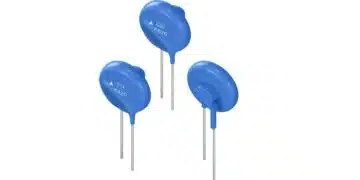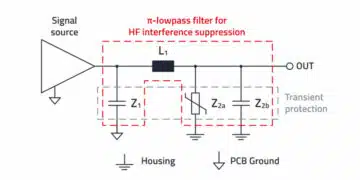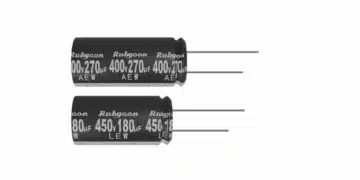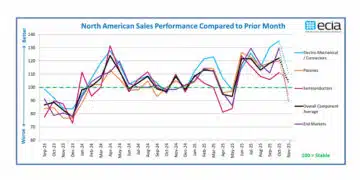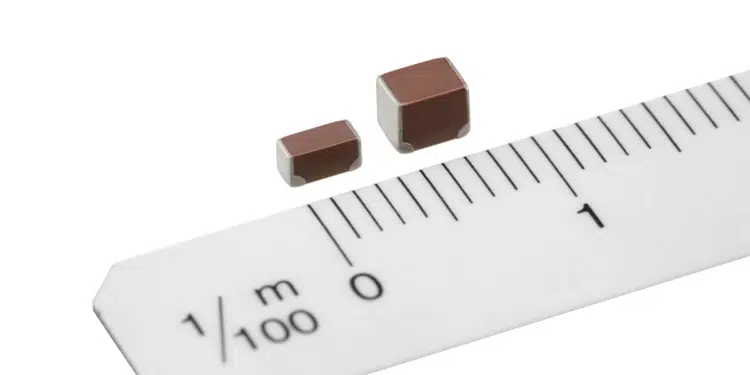TDK Corporation has expanded its CN series of multilayer ceramic capacitors (MLCCs) that are the first of their kind. The new products, 10μF capacitance in 3216 size (3.2 x 1.6 x 1.6 mm) and 22μF capacitance in 3225 size (3.2 x 2.5 x 2.5 mm), offer low-resistance soft termination with low terminal resistance equivalent to standard products. Mass production will commence in September 2021.
MLCCs with soft termination prevent short-circuits in power lines. However, since soft termination has a slightly higher terminal electrode resistance, it is necessary to keep the resistance low to reduce loss. TDK’s new kind of soft termination are resistant to board flexure stress while limiting rising resistance by covering only the board mounting side with a resin layer.
TDK predicts these products will encourage replacing MLCCs in power lines with soft termination to improve reliability. These new products have a higher capacitance than conventional products, help reduce parts and downsize equipment. TDK will continue to expand its MLCC line-up to meet customer needs in the future.
Glossary
- Soft termination: Standard terminal electrodes have a two-layer plating structure with the base electrodes Cu and Ni-Sn, while soft termination has a conductive resin applied between the two layers of plating with the base electrodes Cu and Ni-Sn
- AEC-Q200: Automotive Electronics Council standard for passive automotive components.
Main applications
- Smoothing and decoupling of the power lines for various kinds of electronic control units (ECU) for automobiles
- Power lines for industrial robots, etc.
Main features and benefits
- TDK’s unique terminal structure realizes soft termination that has a low resistance equivalent to that of standard products
- Higher capacitances of 10 μF in 3216 size and 22 μF in 3225 size enable space-saving designs and a reduction in number of components
- High reliability, compliant with AEC-Q200
Main applications
- Smoothing and decoupling of the power lines for various kinds of electronic control units (ECU) for automobiles
- Power lines for industrial robots, etc.
Main features and benefits
- TDK’s unique terminal structure realizes soft termination that has a low resistance equivalent to that of standard products
- Higher capacitances of 10μF in 3216 size and 22μF in 3225 size enable space-saving designs and a reduction in number of components
- High reliability, compliant with AEC-Q200


